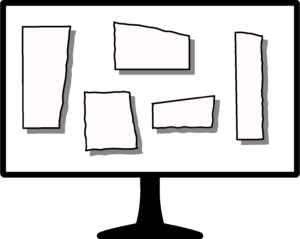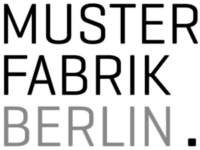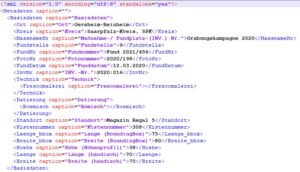
Metadata is a central component in dealing with cultural assets. In archives, libraries and museums, they are used, among other things, for the indexing of objects, convolutions or collections. In archaeology, for example, metainformation can provide information about the find situation or the physical condition of the recovered objects during the recovery of randomly mixed fragments. Sustainable digital preservation, conservation or restoration of cultural assets requires that, in addition to the mere image capture, all relevant metadata of objects is digitally captured and linked to the images in the form of metadata and further processed in an application-related manner.
Metadata interfaces in our automated scanning and assistance systems
The automated scanning and assistance systems developed by MusterFabrik Berlin offer flexible interfaces that can be adapted to a wide range of problems for integrating metadata into the overall process of digital handling of cultural assets.
With the help of our scanner control software, metainformation structures of any complexity can be implemented on a task-specific basis. The metadata can be assigned specifically for individual objects or en bloc for selected volumes. Mixed forms are also possible, in which, for example, higher-level metadata for an entire volume are automatically imported before its digitization while specific metainformation for individual objects in the same volume are set interactively during or after digitization.
In the same way, our automated assistance systems support the definition of metainformation structures of any complexity as well as an automated adding of values during the import of the digitized files. These metadata then adhere to the “digital twins” of the originals from the “real world” in the overall process of digital handling and can be transferred back to the “real world” when intermediate or final results of digital processing are exported.
„Metadata Backpack“
However, our metadata concept goes beyond this static transfer. In our automated systems, all relevant properties and characteristics of the digitized objects are interpreted as metainformation . Figuratively speaking, these are “data backpacks” that are created and initially filled during digitization. When the digital twins are imported into the assistance systems, these data backpacks are then automatically transferred and further enriched with data in the subsequent process. Depending on the application at hand, this is done either interactively or automatically by adding automatically calculated characteristic features of the individual objects to the data backpacks.
At the end of the process, when the data is exported, significantly more meta-information is available for subsequent analysis and further processing of the digital results in the “real world” than was given to the objects at the start of the process during digitization or, in the case of fragmented objects, could be given at all.

